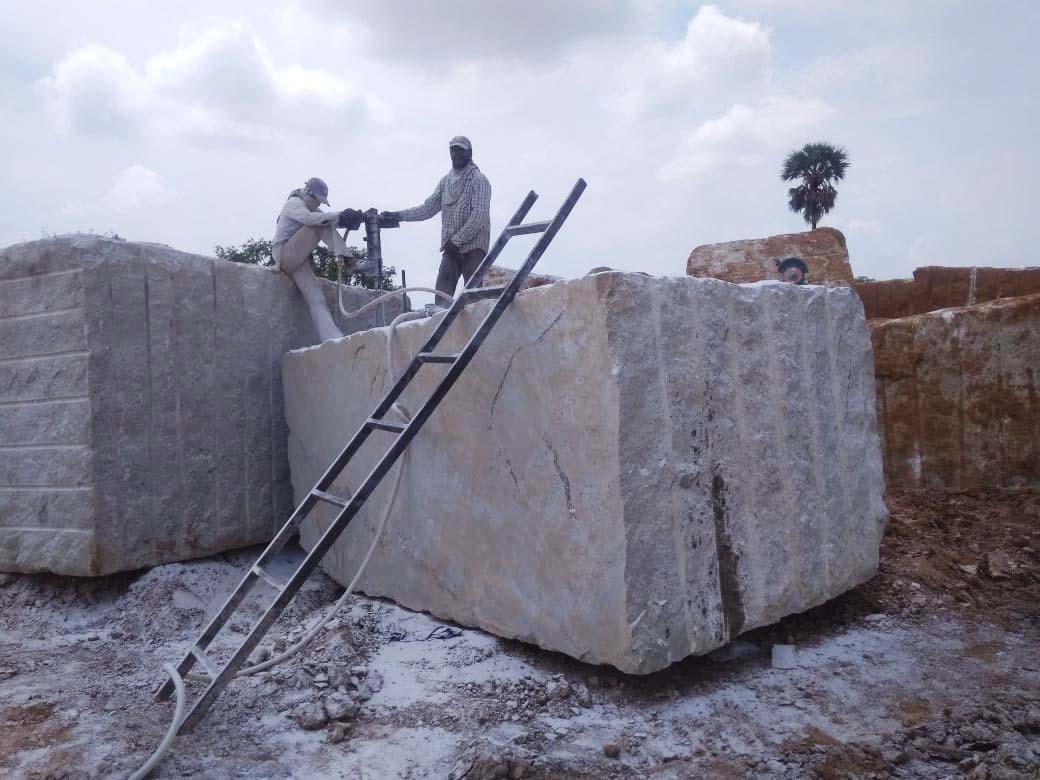Unlocking All-natural Prizes: Granite Quarries in South Africa Introduced
Unlocking All-natural Prizes: Granite Quarries in South Africa Introduced
Blog Article
Uncovering the Rich Background and Sustainable Practices of Granite Quarrying
As we stand on the precipice of discovering the intricate tapestry of granite quarrying, a trip through time discloses not just the physical act of drawing out rock however also the cultural and historic importance woven right into the really fabric of this technique. From the ancient origins that laid the structure for modern quarrying methods to the lasting practices that are shaping the future of this market, each carve mark on granite surfaces tells a tale waiting to be unearthed (granite quarries in south africa). The tradition of granite quarrying extends far beyond plain extraction; it is a testament to human resourcefulness, strength, and the long-lasting attraction of this majestic stone
Ancient Origins of Granite Quarrying
Going back to old human beings, the technique of quarrying granite has been an important component of human background and architectural innovation. The earliest proof of granite quarrying go back to ancient Egypt, where enormous pyramids and intricate sculptures were crafted from this long lasting rock. The Egyptians made use of primitive devices to extract granite blocks from quarries, showcasing the relevance of this material in their significant building and constructions.
Progressing in history, the Greeks also made substantial contributions to the quarrying of granite. The Greeks made use of granite in various architectural marvels, such as holy places and statuaries, showing their ability in shaping and sculpting this sturdy rock. The Romans better refined the methods of quarrying granite, utilizing innovative devices like blades and hammers to remove and form granite for their famous structures.
With the centuries, the practice of quarrying granite has actually advanced, with modern-day innovations improving effectiveness while maintaining the ageless charm of this natural rock - granite quarries in south africa. From old civilizations to contemporary building contractors, the legacy of granite quarrying continues to shape our globe
Evolution of Quarrying Strategies
The evolution of quarrying methods has been noted by a continual development towards greater effectiveness and accuracy in extracting granite. From the simple methods employed by our forefathers to the innovative modern technologies used in contemporary quarrying operations, the industry has actually undergone substantial innovations. Early quarrying strategies entailed manual work with fundamental devices such as blades, hammers, and wedges to extract granite blocks from the planet. As people progressed, strategies like fire-setting and primitive dynamites were introduced to assist in the removal process.
In more recent times, the advent of equipment changed the quarrying sector, making it possible for much faster extraction prices and enhanced performance. Technologies such as ruby cable saws, high-pressure water jets, and pneumatically-driven drills have actually become typical in contemporary quarries, permitting for specific cutting and minimized waste. Furthermore, innovations in computer-controlled equipment and 3D modeling have maximized quarrying procedures, resulting in very little ecological influence and improved sustainability practices. As the need for granite proceeds to climb, the evolution of quarrying strategies remains indispensable to conference sector requires successfully and sustainably.
Social Importance of Granite
Granite holds an extensive social relevance throughout different worlds as a result of its enduring visibility in architectural masterpieces and revered monuments. From the magnificent pyramids of Egypt to the intricate carvings of the Angkor Wat holy place in Cambodia, granite has actually been a material of option for expressing splendour and longevity in social check that heritage. In old Rome, granite columns embellished temples and public buildings, signifying toughness and durability. The social value of granite expands past its physical attributes; it personifies resilience, stability, and timelessness, making it an icon of sustaining traditions and traditions.

Lasting Practices in Quarrying
In the middle of the abundant background of granite quarrying and its cultural importance exists an expanding emphasis on Related Site sustainable practices within the industry. As ecological understanding and worries regarding resource depletion have heightened around the world, the quarrying field has progressively embraced sustainable methods to reduce its impact on the setting and surrounding areas.

Moreover, recovery and rehab of quarry websites post-extraction are essential to sustainable methods. By restoring quarried areas to a natural or beneficial state, such as developing wildlife habitats or leisure areas, quarriers can counter the ecological impact of their procedures and contribute favorably to the regional community.
Tradition of Granite Quarrying
With a historical backdrop soaked in workmanship and industrial development, what withstanding influence has granite quarrying left on the landscape of modern culture? The tradition of granite quarrying goes beyond simple removal methods; it has formed building marvels, city landscapes, and cultural heritage worldwide. The long lasting nature of granite has made it a preferred option for monoliths, buildings, and infrastructure, standing as a testament to the ability and virtuosity of quarry employees across generations.
Moreover, the financial impact of granite quarrying can not be forgotten. The sector continues to supply job opportunity and drive neighborhood economic climates in areas where granite removal is common. It has also stimulated technical innovations in quarrying strategies and tools, causing more efficient and lasting practices.
In terms of sustainability, the legacy of granite quarrying consists of efforts to reduce ecological influences with improvement projects and liable resource management. By stabilizing economic rate of interests with ecological stewardship, the market strives to guarantee that future generations can proceed to gain from this enduring natural deposit.
Conclusion

Report this page